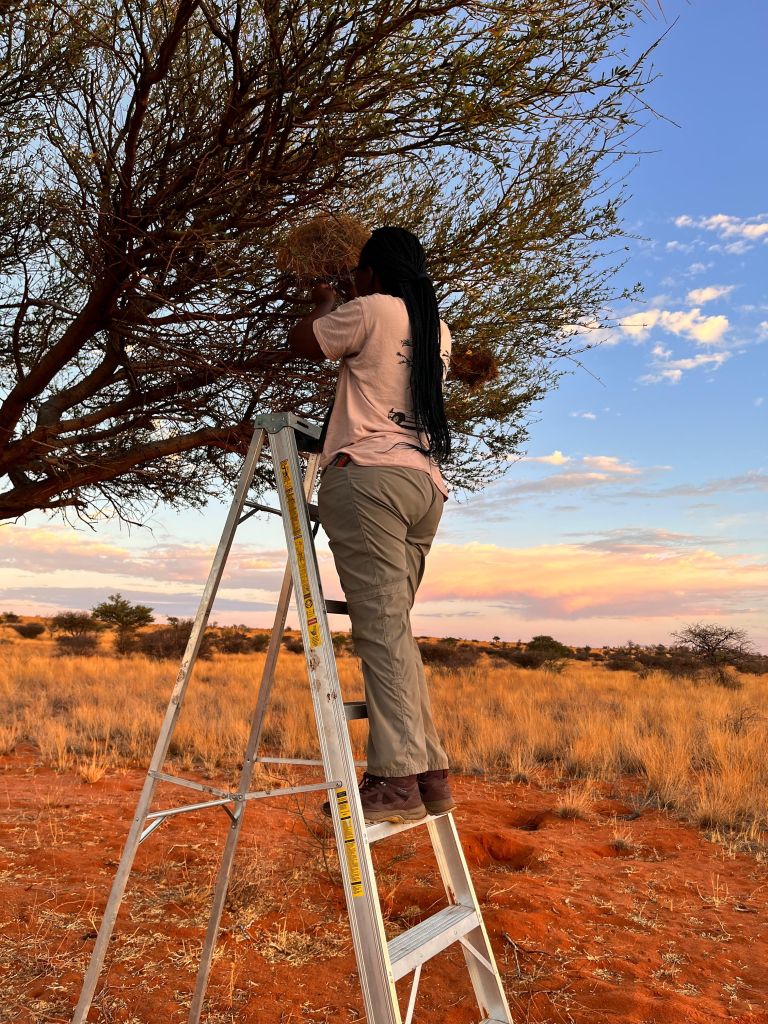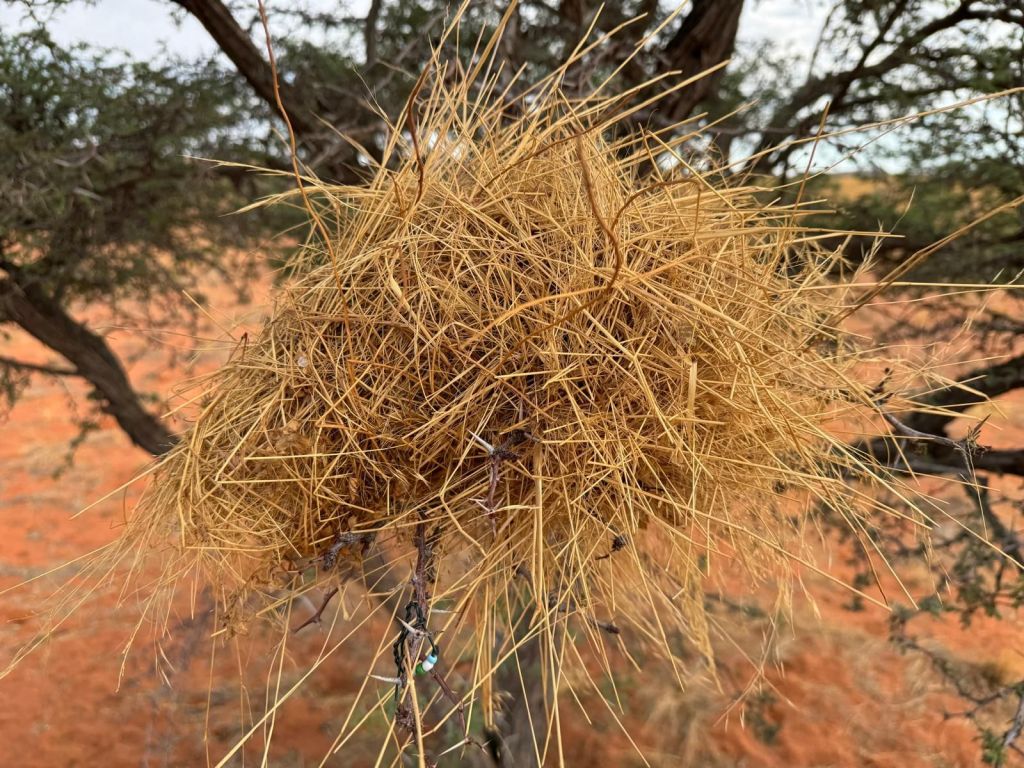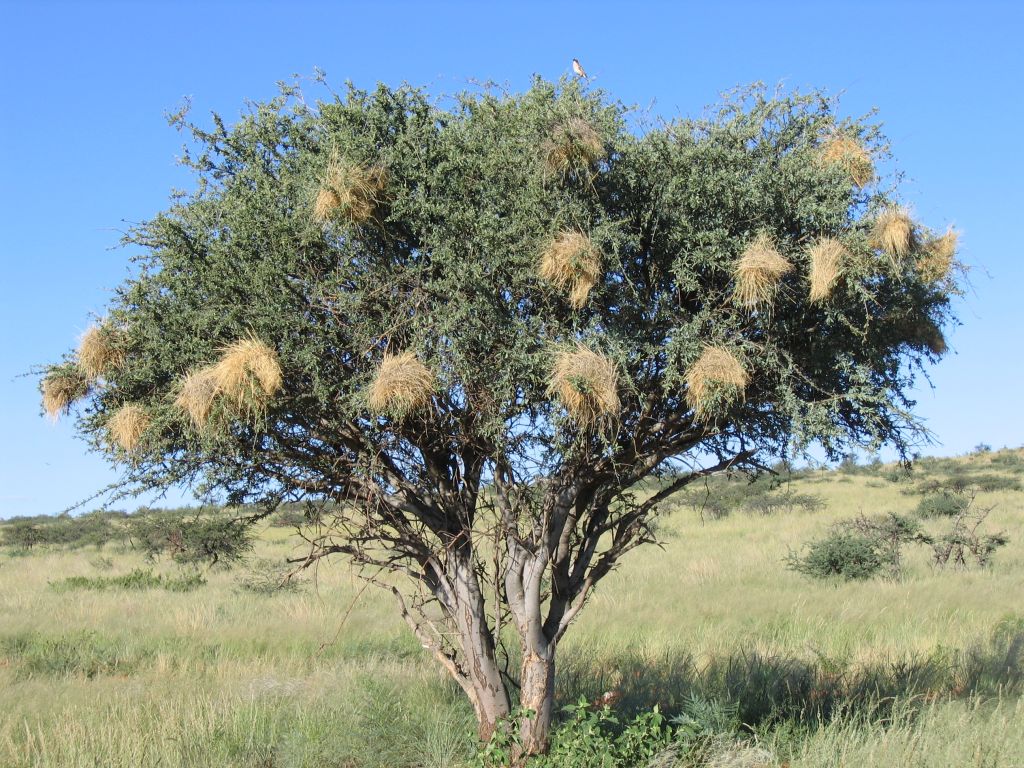In the dry landscapes of the southern Kalahari, where temperatures swing from freezing mornings to scorching afternoons, finding a safe place to rest can mean the difference between life and death for small birds. For many species, that safe place is a nest, not one they’ve built themselves, but one made by another bird: the white-browed sparrow-weaver.
These sparrow-weavers, once common across the region, are now declining in some areas. And that could spell trouble not just for them, but for the wider bird community that quietly depends on their old structures as homes.
Lesedi Moagi, a master’s student at the University of Cape Town, set out to understand just how important these sparrow-weaver-built structures are. “We already knew that other birds sometimes used sparrow-weaver structures,” she says. “But it hasn’t been fully recognized that sparrow-weavers act as ecosystem engineers – and without their structures, other bird species could be left without critical roosting sites.”

Homes shared across species
Sparrow-weavers are social birds that live in small groups and build large, dome-shaped structures with tightly woven grass. These structures aren’t just used once, they often remain intact and available for years. And they don’t go to waste: when the sparrow-weavers move out or abandon them, other birds often move in.
Moagi studied this relationship at the Tswalu Kalahari Reserve by monitoring both natural sparrow-weaver structures and those she relocated to open areas to see how birds responded. The results were clear: where there were sparrow-weaver structures, there were more birds. Species like red-headed finches, black-faced waxbills, acacia pied barbets, ashy tits, and scaly-feathered weavers all took advantage of the ready-made shelter.
The structures were particularly important for roosting, giving birds a place to stay overnight or escape the worst of the midday heat. “In many cases, birds don’t have the time, energy, or materials to build their own structures in these harsh environments,” says Moagi. “Using existing ones is more efficient, and sometimes necessary.”

More than shelter: a buffer against the heat
Moagi also measured temperatures inside and outside the sparrow-weaver structures. She found that the structures offered significant protection from the climate. They stayed warmer on cold mornings and several degrees cooler during the hottest part of the day.
That thermal buffer may be crucial. There has been a sharp increase in the number of days in the Kalahari when temperatures top 35° Celsius, which has been held partly responsible for the decline in numbers and stoked fears of big die-offs.
As climate change brings more frequent and extreme heatwaves, the need for safe, insulating shelter will only grow. Birds without access to these structures may struggle to cope.
“In a place like the Kalahari, just having a stable place to rest can mean survival,” says Moagi.

The consequences of losing nest builders
The number of sparrow-weavers is dropping in parts of the Kalahari, and no one is quite sure why. Less rain, hotter conditions, or changes in habitat could all be contributing. What’s clear is that as their numbers fall, so do the number of these structures.
That drop has knock-on effects. “Fewer sparrow-weavers means fewer structures, and that could cascade into changes in the entire bird community,” says Moagi. “Species that depend on those structures might decline, even if they’re not directly affected by whatever’s causing the weavers to disappear.”
In ecosystems like the Kalahari, where building a home is a big investment, animals often depend on one another for shared infrastructure. When one species does the heavy lifting, like digging burrows or weaving nests, others benefit. But that also makes the community more vulnerable when that key species declines.
Moagi’s research shows just how much depends on these structures. A sparrow-weaver structure isn’t just a place to sleep, it’s a piece of critical infrastructure, one that helps shape who survives and who doesn’t. “If we lose the builders,” she says, “we risk losing the homes too, and everything that depends on them.”

Yves Vanderhaeghen writes for Jive Media Africa, science communication partner of Oppenheimer Generations Research and Conservation.
Author
- Research tackles the tensions between nature and necessity - October 1, 2025
- Unlocking Africa’s wildlife economies - September 19, 2025
- The Hidden Carbon Power of South Africa’s Burned Grassland - September 5, 2025


